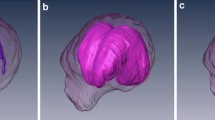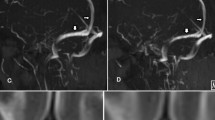Abstract
The effects of gas composition in the subarachnoid space (injection of air or N2O) and in an anesthetic gas mixture (inhalation with or without N2O) on cerebrospinal fluid pressure were studied in 22 patients with pneumocisternography for transsphenoidal craniectomy. N2O (66%) anesthesia for 10 min increased cerebrospinal fluid pressure by up to 150% in 7 patients who were intrathecally injected with air. Withdrawal of N20 from the anesthetic gas mixture for sixty minutes reduced cerebrospinal fluid pressure to the initial pressure. A second N2O administration to the anesthetic gas mixture did not elevate cerebrospinal fluid pressure by as much as the first N20 administration. In 7 patients receiving subarachnoid air injection, replacing 66% N2O with 66% nitrogen prevented the change in cerebrospinal fluid pressure throughout the operation. In 8 patients N20 anesthesia and N20 intrathecal injection failed to eliminate the rise in cerebrospinal fluid pressure in 8 patients. Withdrawal of N20 from the anesthetic gas mixture for 60 min is recommended to prevent an extreme increase in cerebrospinal fluid pressure during pneumocisternography.
Similar content being viewed by others
References
Eger EI II: Pharmacokinetics, Nitrous Oxide/N2O. Edited by Eger EI II. London, Edward Arnold, 1985, pp. 93–103
Kitahata LM, Katz JD: Tension pneumocephalus after posterior-fossa craniotomy, a complication of the sitting position. Anesthesiology 44:448–450, 1976
Lunsford LD, Maroon JC, Sheptak PE: Subdural tension pneumocephalus: Reports of two cases. J Neurosurg 50:525–527, 1979
Leunda G, Cabenzudo JM, Areitio E, Vaquero J, Gilsanz F: Subdural tension pneumocephalus after posterior fossa operation: Is the inverted bottle phenomenon the only causative factor? Surg Neurol 15:303–305, 1980
MacGillivray RG: Pneumocephalus as a complication of posterior fossa surgery in the sitting position. Anaesthesia 37:722–725, 1982
Pandit VA, Mudge BJ, Keller TS, Samra SK, Kilaru P, Pandit SK, Cohen PJ: Pneumocephalus after posterior fossa exploration in the sitting position. Anaesthesia 38:996–1001, 1982
Toung T, Donham RT, Lehner A, Alano J, Campbell J: Tension pneumocephalus after posterior fossa craniotomy: Report of four additional cases and review of postoperative pneumocephalus. Neurosurgery 12:164–168, 1983
Skahen S, Shapiro HM, Drummond JC, Todd MM, Zelman V: Nitrous oxide withdrawal reduces intracranial pressure in the presence of pneumocephalus. Anesthesiology 65:192–195,1986
Elwyn RA, Ring WH, Loeser E, Myers GG: Nitrous oxide encephalography: 5-year experience with 475 pediatric patients. Anesth Analg 55:402–408, 1976
Paul WL, Munson ES, Maniscalco JE: Cerebrospinal fluid pressure during O2 encephalography and N20 inhalation. Anesth Analg 55:849–852, 1976
Sakabe T, Kuramoto T, Kumagae S, Takeshita H: Cerebral responses to the addition of nitrous oxide to halothane in man. Brit J Anaesth 48:957–962, 1976
Toung TJK, McPherson RW, Ahn H, Donham RT, Alano J, Long D: Pneumocephalus: Effects of patient position on the incidence and location of aerocele after posterior fossa and upper cervical cord surgery. Anesth Analg 65:65–70, 1986
Witcom JB, Torrens MJ, Gye RS: Intracranial pneumtocele: An unusual complication following intraventricular drainage in a case of benign intracranial hypertension. Neurosurgery 12:161–163, 1976
Grundy BL, Spetzler RF: Subdural pneumocephalus resulting from drainage of cerebrospinal fluid during craniotomy. Anesthesiology 52:269–271, 1980
Welch K, Friedman V: The cerebrospinal fluid valve. Brain 83:454–469, 1960
Saidman LJ, Eger EI II: Change in cerebrospinal jfluid pressure during pneumoencephalography under nitrous oxide anesthesia. Anesthesiology 26:67–72, 1965
Gordon E and Greitz T: The effect of nitrous oxide on the cerebrospinal fluid pressure during encephalography. Brit J Anaesth 42:2–8, 1970
Author information
Authors and Affiliations
About this article
Cite this article
Oku, S., Wakita, K., Hunasaka, M. et al. The effects of composition of subarachnoid gas space and anesthetic gas mixture on cerebrospinal fluid pressure changes during cisternography for transsphenoidal craniectomy. J Anesth 5, 221–227 (1991). https://doi.org/10.1007/s0054010050221
Received:
Accepted:
Issue Date:
DOI: https://doi.org/10.1007/s0054010050221




